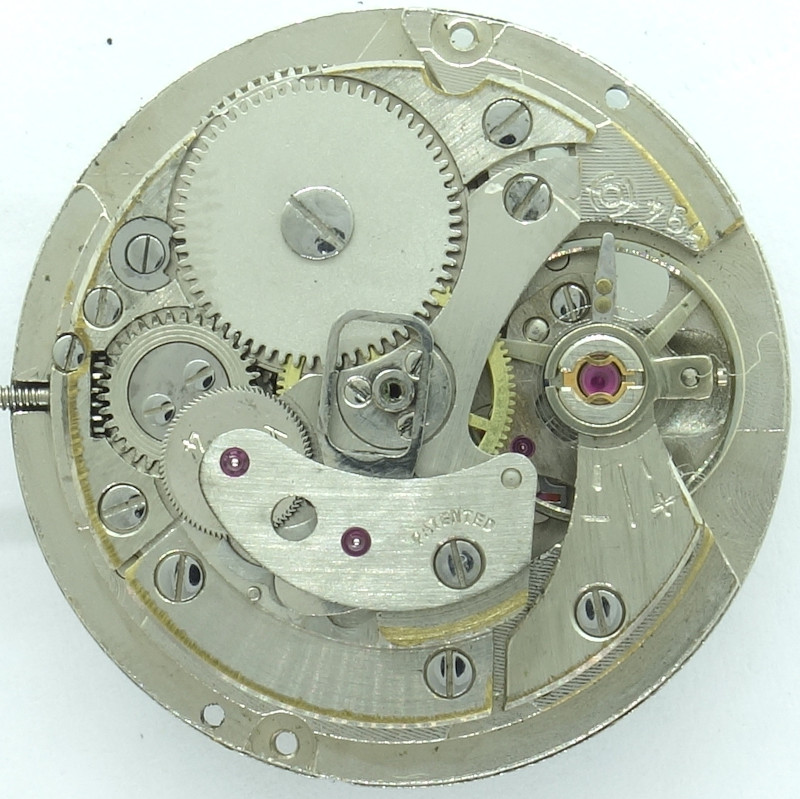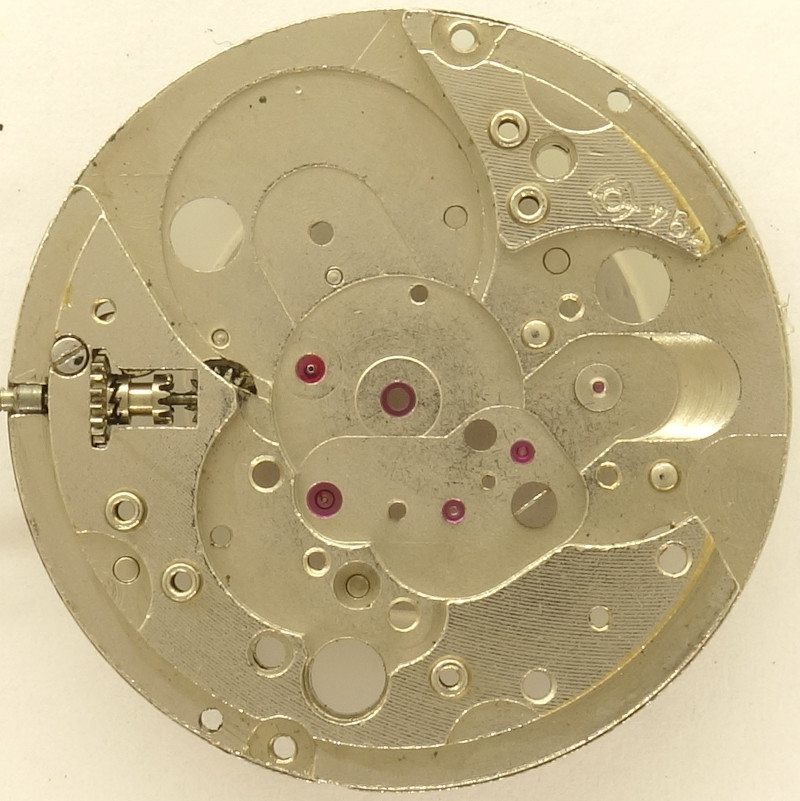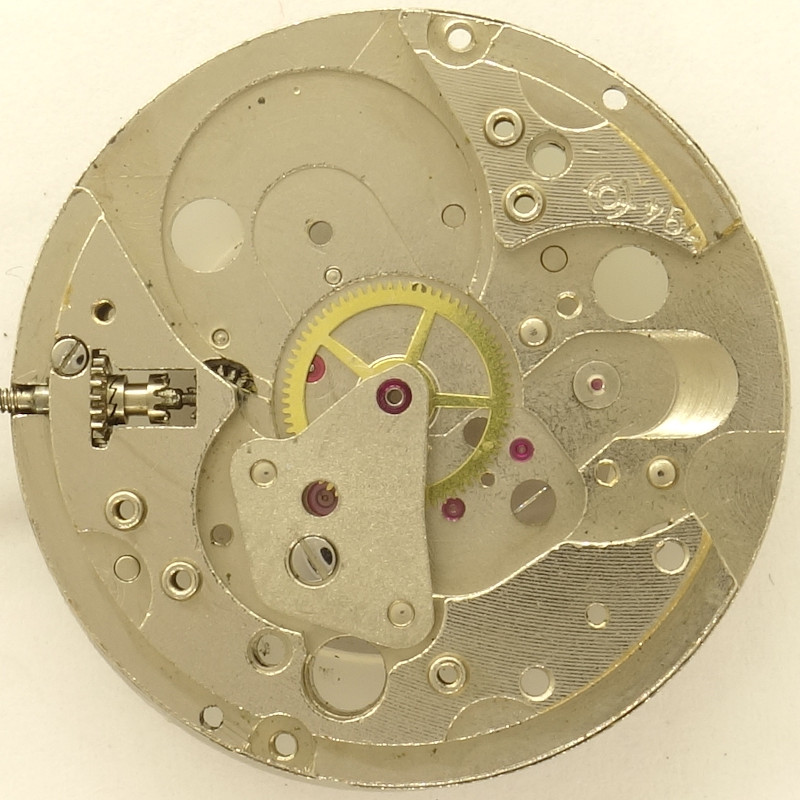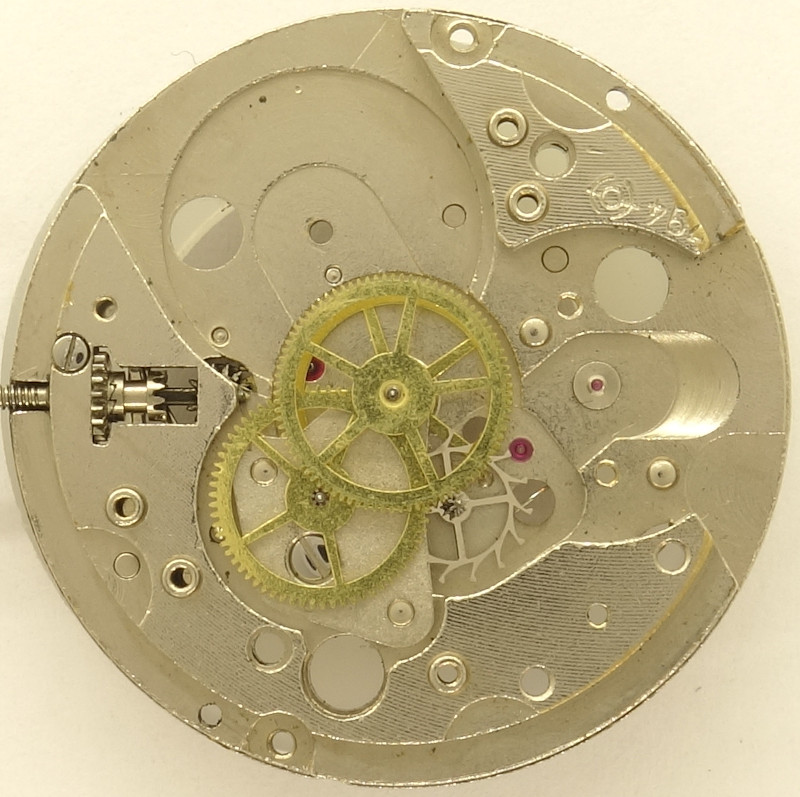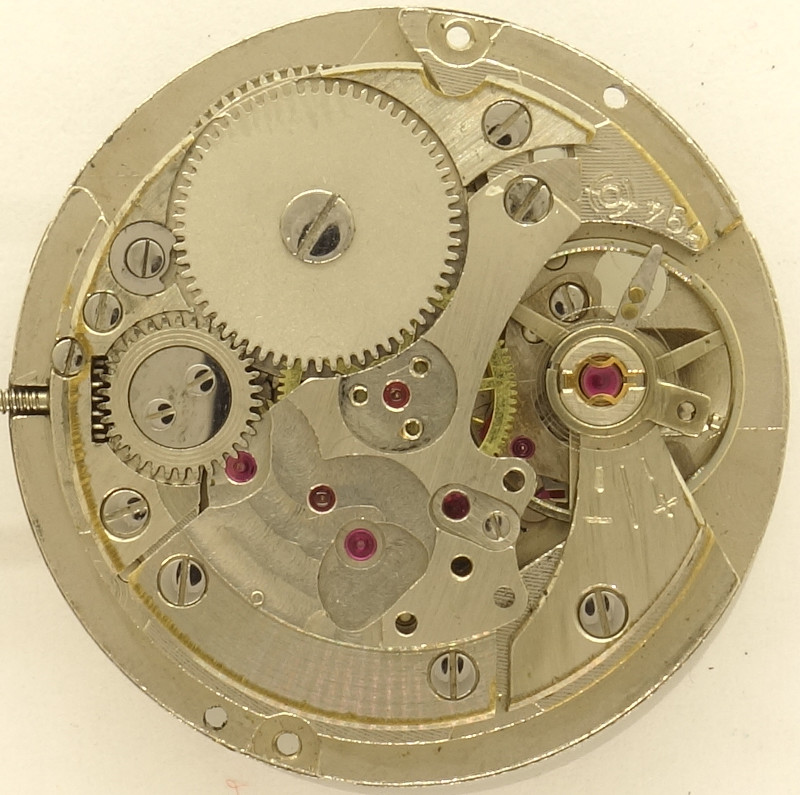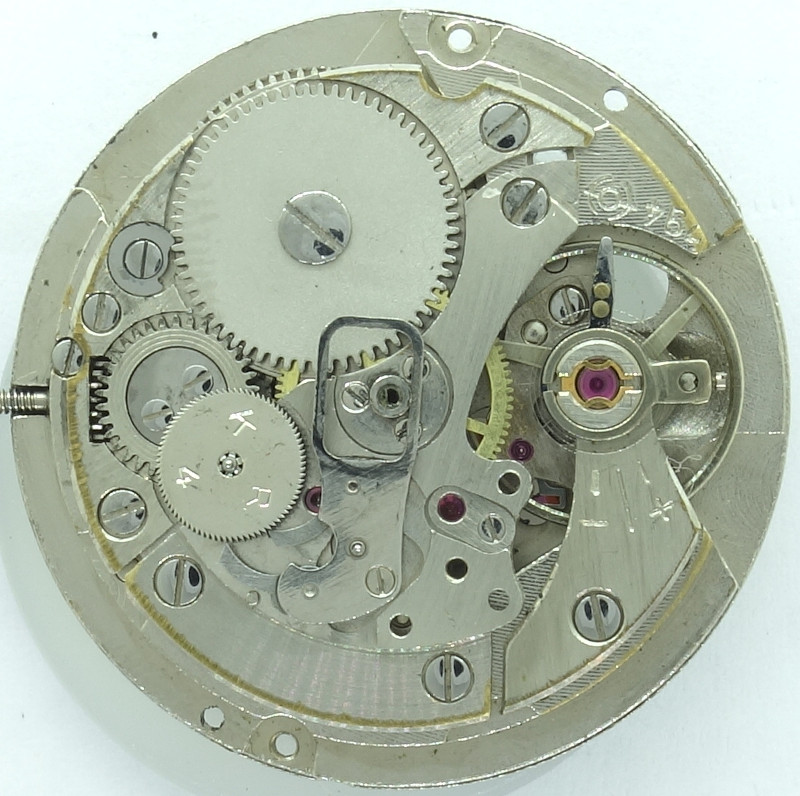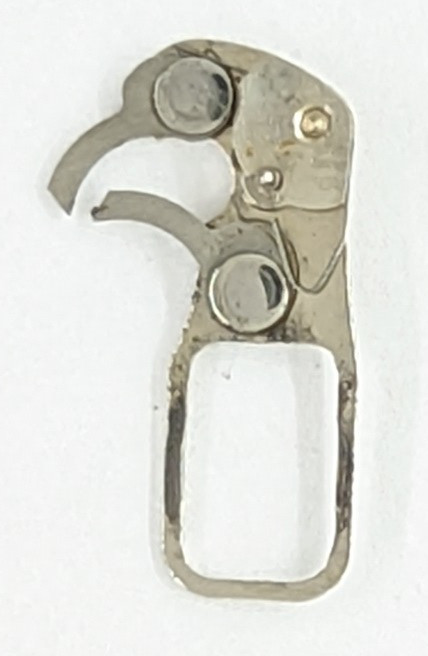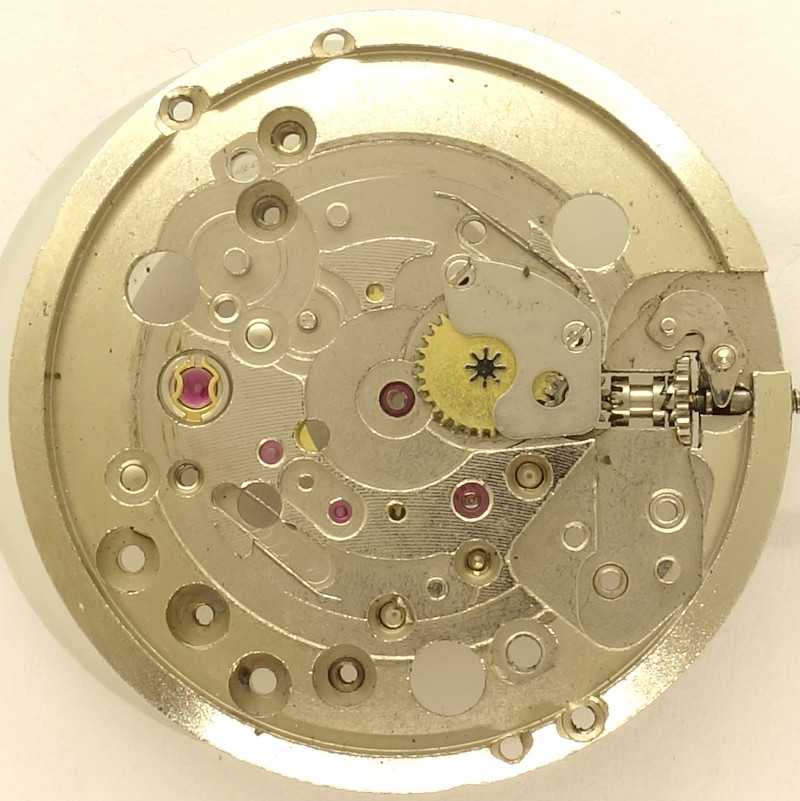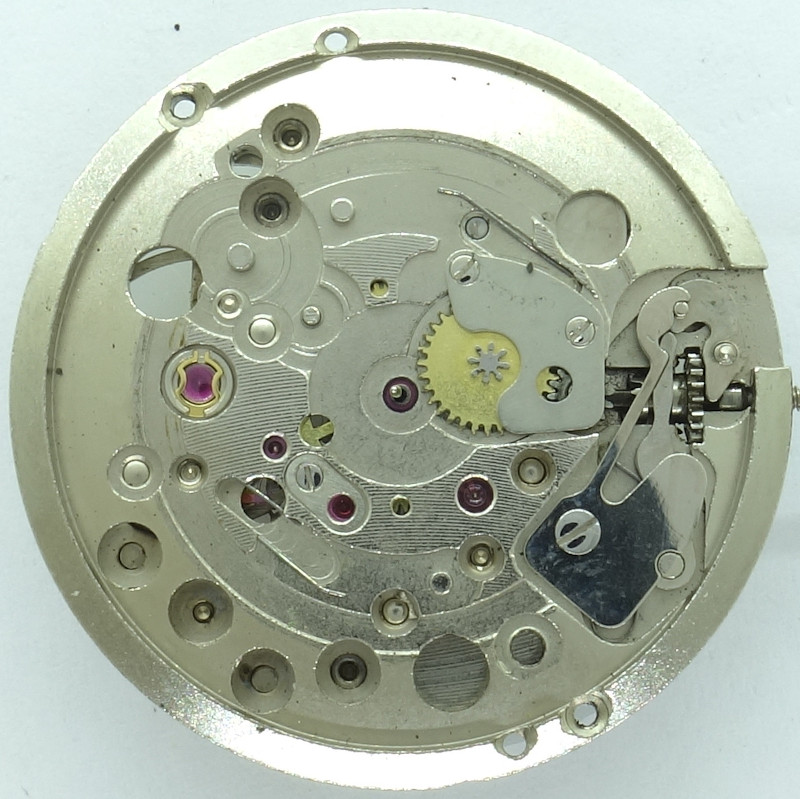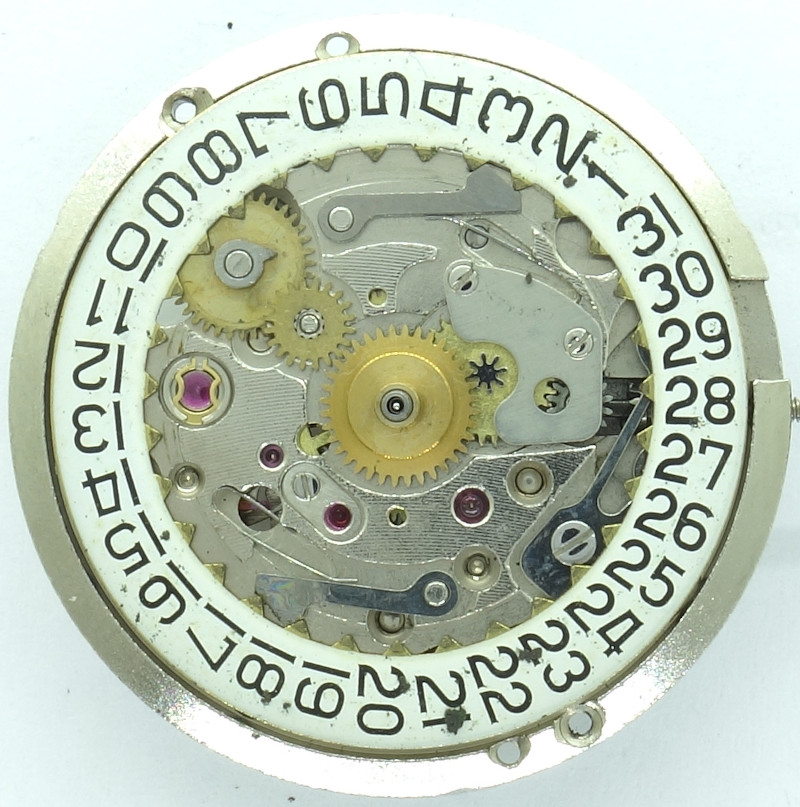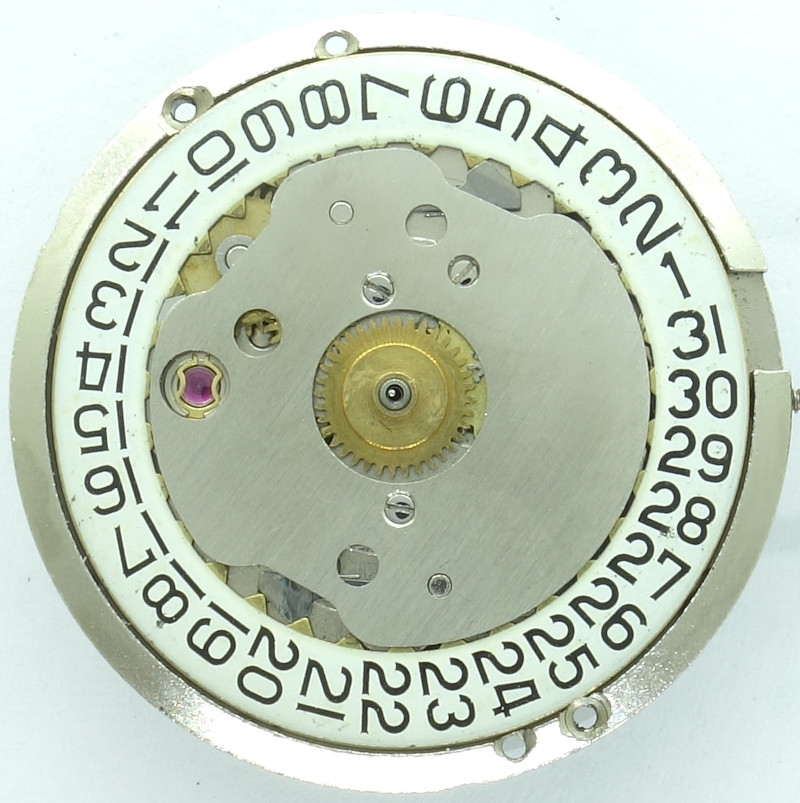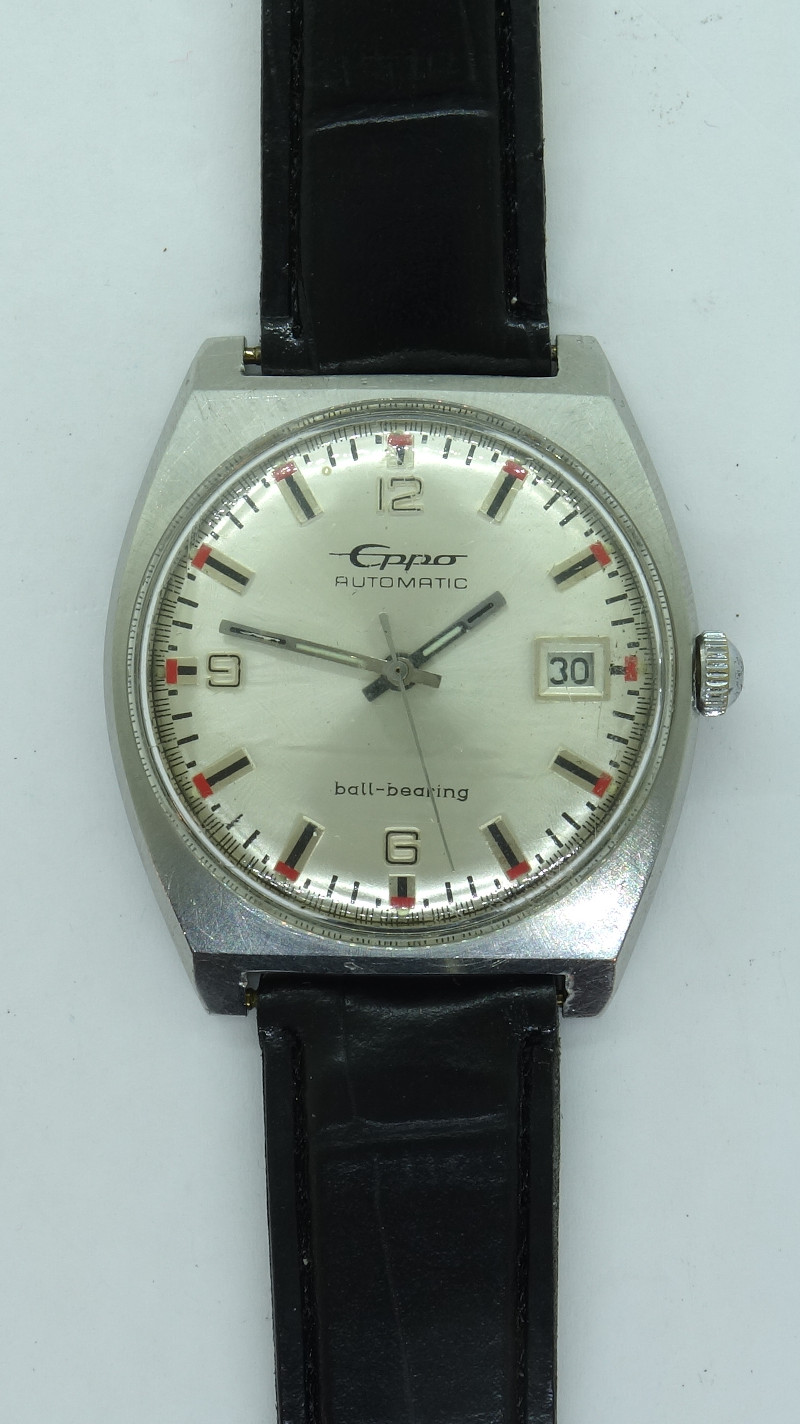Description
The 11 1/" ligne Otero 794K from probably the late 1960s follows the tradition of conventionally constructed selfwinding movements.
Unlike its predecessors, the beat rate was increased to 21600 A/h, and the suffix “K” indicates the use of a ball bearing for the oscillating weight in contrast to the axle bearing, which was used normally.
Unfortunately, on the specimen described here, the oscillating weight is missing.
Compared with the predecessors, the base plate only changed in details. Of course, all important bearings contain rubies, even the bearing for the center minute wheel.
The Otero 794K uses the classical gear train with center minute wheel, which is beared under its own cock and driven by the mainspring barrel.
The minute wheel is followed by the third wheel, the directly driven center seconds wheel and the steel escape wheel.
On the balance, you see the progress, it uses three legs and has got no more screws. It regulates a classical swiss pallet lever movement.
The hairspring stud is now moveable, so that the beat error can be neutralized. The adjustment of the beat rate happens on the hairspring key directly, but this time, it is already prolonged.
Of course, an Incabloc bearing pair is used for the balance wheel.
To reach the better marketable number of 25 jewels, cap jewels (on the escape wheel bearings) and jewels for the selfwinding gear train are used.
The selfwinding mechanism uses only two parts besides the oscillating weight, an escenter lever (like the “Magic Lever” of Seiko) and a reduction wheel, driven by it.
The excenter lever consists of two spring-loaded pawls and a rectangle into with the oscillating weight engages to put it back and forth.
As said before, this construction for a bidirectional selfwinding mechanism is well known and proven and certainly familiar from Seiko.
On the yet empty dial side, you can already see the two springs, which will later on ensure two levers to make the date ring snap into position.
Of course, the Otero 794K uses a yoke winding system.
The calendar mechanism is pretty stardard, too. It ensures a semi-fast correction by turning the hands back and forth betweeen 8am und midnight.
In the lab
Timegrapher result
For the fact, that this movement is heavily used and even has got a broken minute wheel, the timegrapher output is really good!| horizontal positions | |||
|---|---|---|---|
| dial up | +-0 s/d | 246° | 0.1ms |
| dial down | +-0 s/d | 219° | 0.1ms |
| vertical positions | |||
| crown right (12 up) | +30 s/d | 179° | 0.0ms |
| crown up (3 up) | -30 s/d | 199° | 0.0ms |
| crown left (6 up) | -7 s/d | 205° | 0.3ms |
| crown down (9 up) | +-0 s/d | 211° | 0.2ms |
Technical data
| Manufacturer: | Otero |
| Caliber: | 794K |
| Size: | 11 1/2''' (measured: 25,6mm) |
| A/h: | 21600 |
| Number of jewels: | 25 |
| Escapement: | Pallet lever |
| Balance types: |
monometallic anular balance (three legs) |
| Shock protection(s): |
Incabloc |
| Balance bearing / direction hairspring: | Counterclockwise |
| Moveable stud: | yes |
| Adjust mechanism: | Hairspring key |
| Construction: |
|
| Construction type: | solid construction |
| Winding mechanism: | yoke winding system |
| Setting lever spring: | 1 hole(s) |
| Features: |
|
| References: |
Flume: K3 180 |
| Inventory number: | 22049 |
